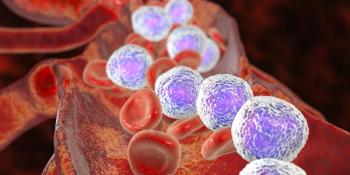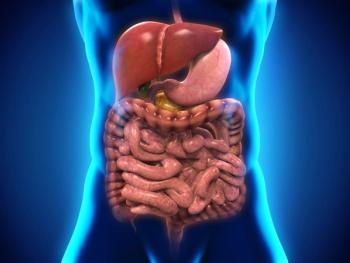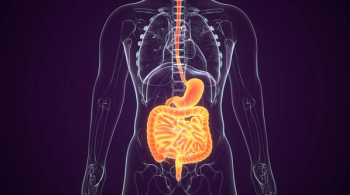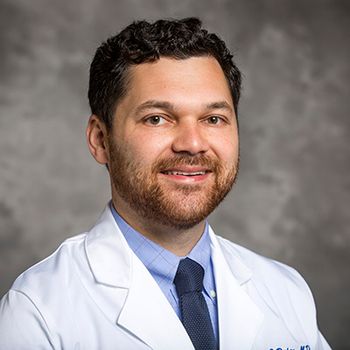
CAR T-Cell Therapies Show Superior Efficacy, Safety in Multiple Myeloma
Barry Paul, MD, believes cilta-cel, anito-cel, and arlo-cel are some of the most promising CAR T-cell therapies in the multiple myeloma space.
At the 2025 National Immune Cell Effector Therapy (ICE-T) Conference, CancerNetwork® spoke with Barry Paul, MD, following a presentation he delivered on recent advances in chimeric antigen receptor (CAR) T-cell therapies in multiple myeloma.1 These new therapies have been able to elicit deep remissions while also being a “one-and-done” infusion, reducing the time for treatment administration and lowering the amount of toxicity experienced.
Paul specifically mentioned ciltacabtagene autoleucel (cilta-cel; Carvykti), anitocabtagene autoleucel (anito-cel), and arlocabtagene autoleucel (arlo-cel) as 3 current CAR T-cell therapies that hold the most promise in multiple myeloma. Cilta-cel, for example, recently demonstrated a median overall survival (OS) of 60.7 months (95% CI, 41.9-not evaluable); anito-cel has shown low rates of toxicities coupled with high response rates; and arlo-cel, according to Paul, has the potential to be as efficacious as talquetamab-tgvs (Talvey), with less toxicity.2
He also noted that the session he was a part of at the conference discussed the proper way to sequence CAR T-cell therapy with bispecific antibodies, particularly in community settings, where oncologists may not be able to offer CAR T-cell therapy as an option.
Ultimately, Paul, an assistant professor of cancer medicine at Atrium Health Levine Cancer Institute, affiliated with Wake Forest University School of Medicine, said that all patients should be given an option to receive CAR T-cell therapy.
CancerNetwork: What is the significance of CAR T-cell therapies?
Paul: CAR T-cell therapies are incredibly important for [patients with multiple] myeloma. What these do is allow us to target specific antigens that are unique to plasma cells in such a way that they get into the deepest possible remissions. What we know is that the deeper the remission that we can put a patient into, the longer that remission tends to last. This is a one-and-done infusion for patients. They don’t have to continue to come back for additional multiple myeloma therapy, which is incredibly helpful for them. These patients are used to being treated for years and years, so giving them a holiday from chemotherapy is something they truly enjoy.
What are the standard treatment options for patients with multiple myeloma?
We have lots of different options for our patients. We try to derive the best possible treatment for each specific patient based on their unique situation, their unique [multiple] myeloma, and what other comorbidities they may or may not have. Traditionally, we would offer a chemotherapy-based regimen that is a combination of immunotherapies and chemotherapies that target both the [multiple] myeloma cells directly as well as the immune microenvironment. CAR [T-cell therapy] is a different way to address these types of patients in such a way that they are not necessarily getting chemotherapy but they’re getting an immune-based targeted therapy that attacks the [multiple] myeloma at the highest degree.
What novel advances in CAR T-cell therapy hold the most promise?
I’m encouraged by the more recent data that were published for cilta-cel with the 5-year follow-up, with…[the median] OS being 60 months, or 5 years. Plus, about 33% of patients were still responding to cilta-cel and at a complete response 5 years after their infusion. This is the first time in a long time that those of us who work in multiple myeloma are talking about a possible cure…which is incredibly exciting. It would be wonderful to be able to tell a patient that they are cured. That’s a very encouraging finding.
The anito-cel data is provocative, with high response rates in patients with high-risk disease and extramedullary disease. [There are] lower risks of long-term toxicities than we were seeing with cilta-cel. It will be interesting to see if that continues to bear itself out with more follow-up.
Finally, [there are] the arlo-cel data, with the GPRC5D CAR [T-cell therapy]. GPRC5D is an incredible antigen target to be targeting based on the data for talquetamab, but the toxicity with talquetamab tends to be very challenging to manage. Arlo-cel has the potential to be just as effective, if not more so, than talquetamab with less toxicity. Those would be the ones I’m most excited about.
What are the toxicity concerns with multiple myeloma?
There are early toxicities and late toxicities, and with the early toxicities, we are trying to be more aggressive about managing to prevent those late toxicities from manifesting. To be fair, we don’t necessarily know as much about how to prevent these late toxicities, but we are trying to do more and more things to intervene early and often to prevent some of these early toxicities from perhaps predicting more risk for those late toxicities. The early toxicities are things like cytokine release syndrome, or CRS, and immune effector cell–associated neurotoxicity syndrome, or ICANS. These are typically low-grade if they are not intervened upon rapidly. This is why you would want to have these types of things done at an experienced center that has lots of experience managing these types of [adverse] effects and has the ability to do so early, so that these [adverse] effects don’t start to extend into more serious complications.
What are the next steps for improving CAR T-cell therapies?
New antigen targets would be a big one. We are targeting these things in such a way that they’re very effective, but if patients, at some point, lose that antigen target, then using different mechanisms to target the same antigen is going to be futile. Having more options for patients who are heavily pretreated and may have lost that antigen or have that antigen mutated in a way that it’s no longer responding to therapy would certainly be effective. That would be helpful.
Ways to help extend the benefit of CAR T-cell therapies: maintenance-based strategies and things like that to help CAR T expand and to prevent overexpansion, where we have significant [adverse] effects. Those opportunities are a great place to start.
What were some of the takeaways from the symposium?
One of the big ones is the sequencing of [CAR T-cell therapies] with or without bispecific antibodies. These [CAR T-cell therapies] and bispecific antibodies targeting BCMA [B-cell maturation antigen] share the same target, so the question would be, what’s the best way to target these things? Is it to do a CAR [T-cell therapy] first or a bispecific first?
In the community setting, where a lot of practitioners are comfortable offering a bispecific antibody but can’t do CAR T-cell therapy, are they doing a disservice if they…offer those patients a bispecific without having them evaluated for CAR [T-cell therapy] first? My specific thought process on this is that there are data from the [phase 2 CARTITUDE-2 trial (NCT04133636)] and some others that suggest that if a patient has responded to a CAR T-cell therapy for at least 6 months, they have a decent chance of having a good response to a bispecific antibody. The converse of that [is] if a patient has had a bispecific antibody and they were treated until progression and then were challenged with a CAR [T-cell therapy], there’s less efficacy in that space. I do believe that every patient should be offered a CAR [T-cell therapy] before they’re offered a bispecific, with some rare exceptions for patients who are frail or perhaps have significant comorbidities or don’t have access to a CAR T-cell therapy center.
What do you hope others take away from this conversation?
Everyone deserves access to a CAR [T-cell therapy]. Send your patients to a specialty center that has CAR [T-cell therapy] availability so we can evaluate these patients and truly determine if there’s a CAR [T-cell therapy] option for them. For most patients, the answer to that will be yes, and most patients will do well with it, not just from a tolerability perspective but from an efficacy perspective as well. Those are certainly what patients are looking for. The other takeaway point is that the toxicities are manageable, that they’re there, but they’re manageable as we gain more experience. That should not be a barrier for patients to get CAR T-cell therapy.
References
- Paul B. Advances in CAR-T therapy for myeloma. Presented at: 2025 National Immune Cell Effector Therapy Conference; July 26, 2025; Orlando, FL.
- Jagannath S, Martin TG, Lin Y, et al. Long-term (≥5-year) remission and survival after treatment with ciltacabtagene autoleucel in CARTITUDE-1 patients with relapsed/refractory multiple myeloma. J Clin Oncol. Published online June 3, 2025. doi:10.1200/JCO-25-00760
Newsletter
Stay up to date on recent advances in the multidisciplinary approach to cancer.

















































































